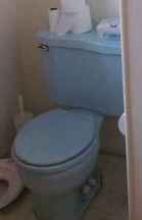And indeed it is. Water is rapidly becoming the new oil. As population numbers, cities, industrialization, and other processes that require water grow, so does the issue of water scarcity. 1 in 3 people are currently affected by water scarcity, and about 20% of the world lives in areas where water is physically scarce to the point where many do not have safe, clean water to drink, cook with, or bathe in. Water borne illnesses are also common in these areas, resulting in dehydration and death from something people in the western world take severely for granted.
Durban has the right idea—to stop using this invaluable, dwindling resource as a means to flush our bodily waste and instead to conserve it. If this idea took across the globe, imagine how much water could be saved! Literally flushing water away is one of the most wasteful things we do with the resource, and remedying this with such a device could be one of the soundest solutions to water scarcity we’ve seen yet.
The only problem is that the people of Durban aren’t taking to the idea so well. In fact, the idea of using toilets without water seems disgusting to them—as it surely does to many other people. There is a taboo about handling body waste—even though it, itself, is a valuable resource that can be used as fertilizer—as well as a notion that it’s not only unsanitary but also beneath people. Using water feels more civilized and advanced—and, like many traditions, it is hard to kill.
In order to promote using this form of toilet and to encourage the people of Durban to really take part in the conservation project, the city is considering paying people to use the toilets. Rather than making people handle their own sewage to simply conserve water, the city plans on paying residents for their waste to use it as fertilizer. If the “pee for profit” idea works, millions of gallons of water can be saved—and perhaps the rest of the world will finally take the hint and join the water saving revolution as well.
